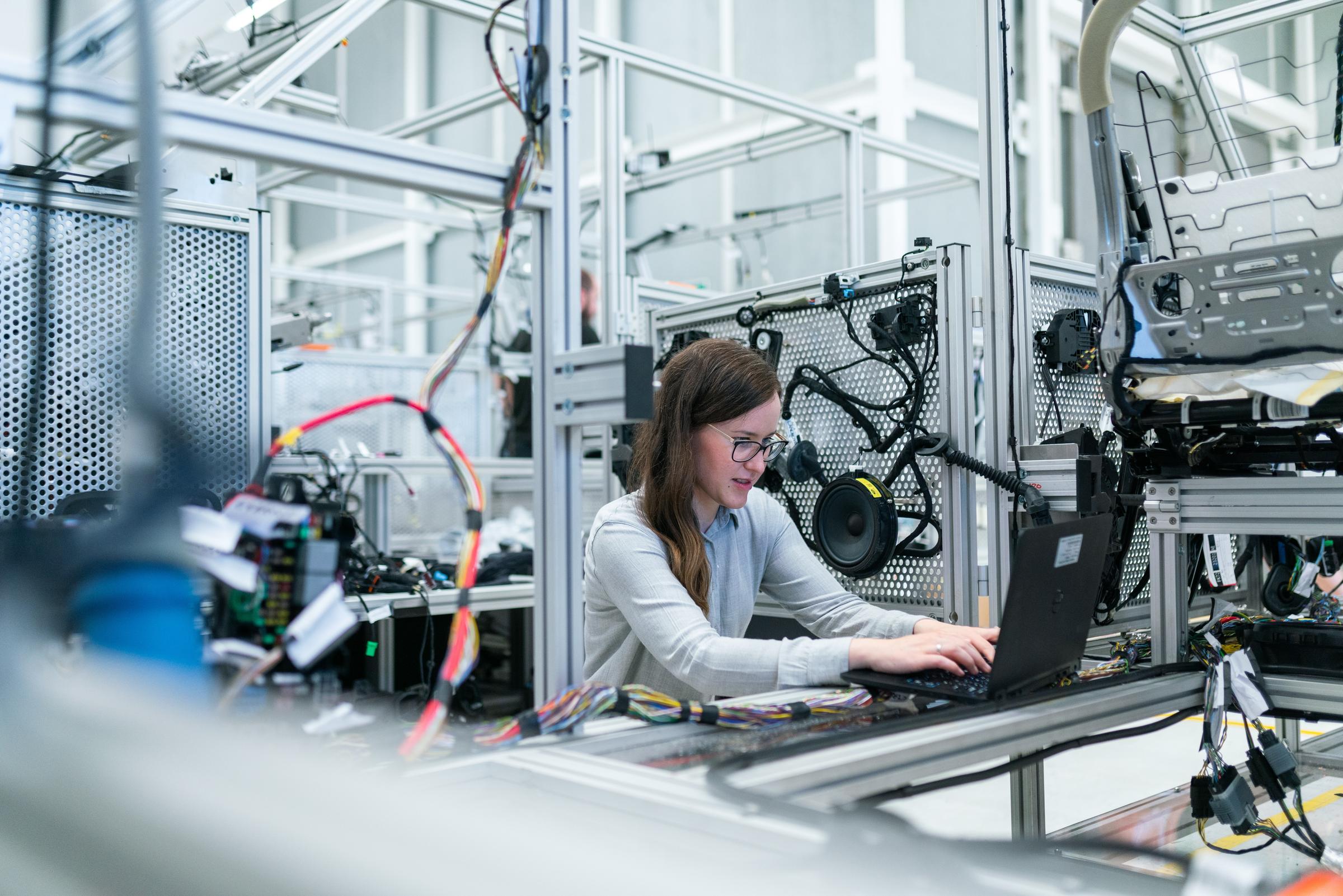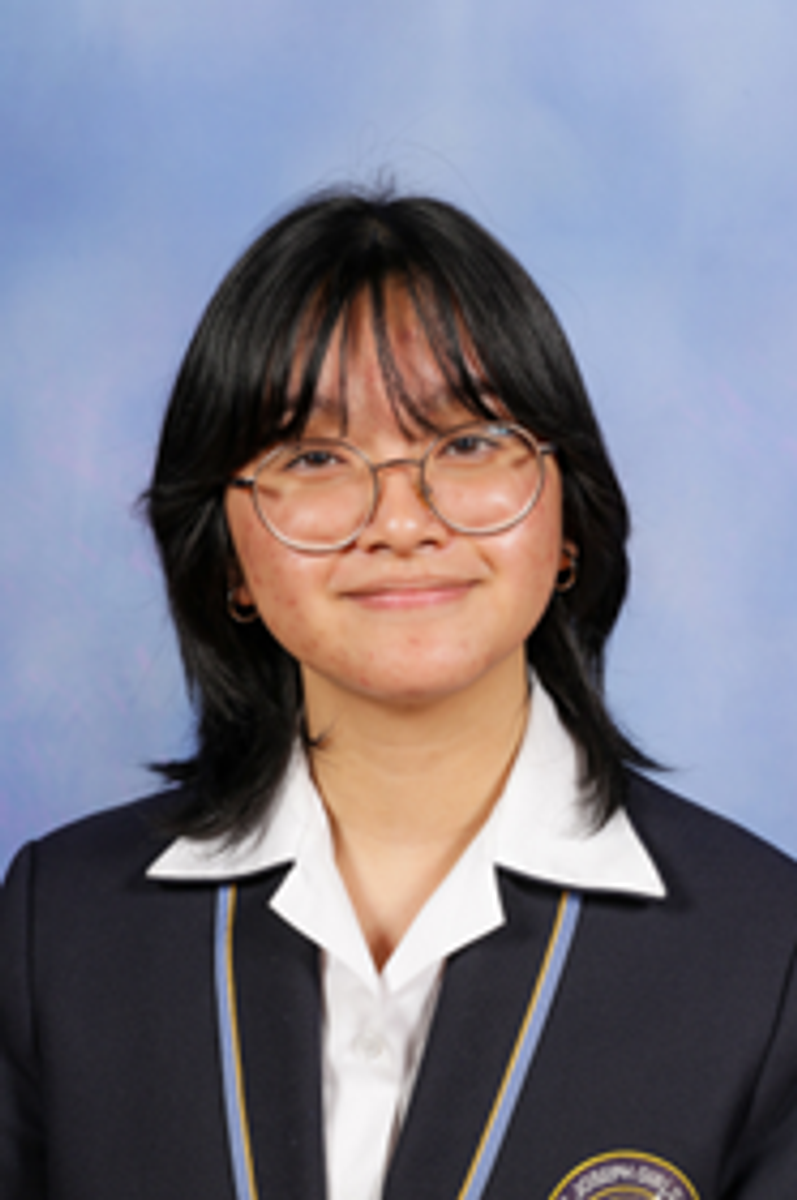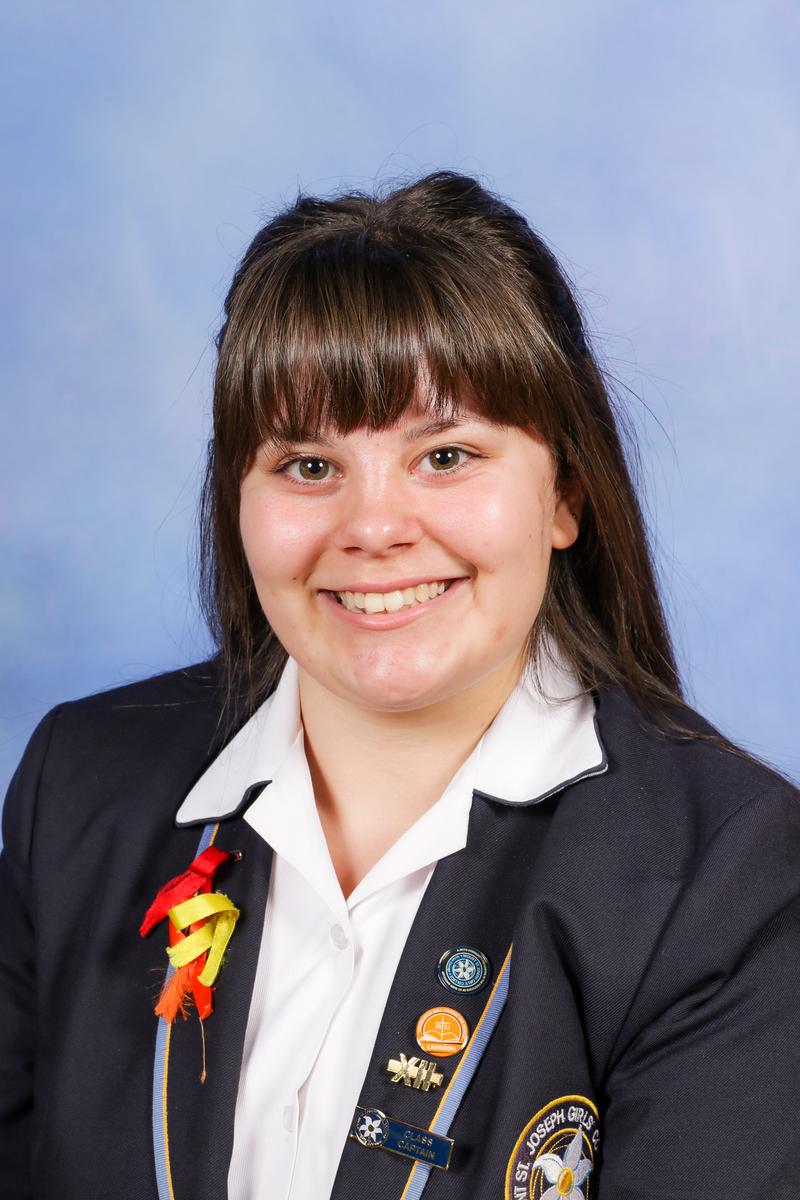Technology

- Applied Computing
- Food Studies
- Product Design and Technology
When selecting your Technology for VCE, please consider the following points:
- Well-established habits of regular study in the subject area provides the basis for selection of Technology subjects at VCE.
- There are no prerequisites for entry into Units 1 and 2 however students must undertake Unit 3 prior to undertaking Unit 4. Students electing a Unit 3-4 course in Technology should complete Units 1 and/or 2 in the relevant study to ensure appropriate skill and knowledge development.
- Some of the subject areas have practicals or excursions associated with the successful completion of outcomes. These activities are compulsory.
Applied Computing
Subject Entry Information | Complementary Subjects | Types of Assessment |
|---|---|---|
|
|
|
Watch the video here:
Emily Chuong- I had a keen interest in the technology field prior to Year 11, completing IT as a subject since starting at MSJ. Coding is a main reason why this subject is fun to do. Working together with friends to fix up wrong code is a great experience. What is challenging, is the amount of writing you have to do - it is like a portfolio subject when you complete project management. When it comes to coding itself, obviously there is rage, confusion, and frustration that you feel because computers are fickle creatures that just will not listen to you. For those who are interested in coding and technology, this subject would definitely be a challenge but definitely one worthwhile in developing your skills. Applied computing is mainly focused on practical work rather than theory, the exam will differ from the things you do throughout the year in class.
Description
VCE Applied Computing focuses on the strategies and techniques for creating digital solutions to meet specific needs and to manage the threats to data, information and software security. The study examines the attributes of each component of an information system including people, processes, data and digital systems (hardware, software, networks), and how their interrelationships affect the types and quality of digital solutions.
Each unit deals with specific content contained in areas of study and is designed to enable students to achieve a set of outcomes for that unit. Each outcome is described in terms of key knowledge and key skills.
Unit 1: Applied Computing
In this unit students are introduced to the stages of the problem-solving methodology. Students focus on how data can be used within software tools such as databases and spreadsheets to create data visualisations, and the use of programming languages to develop working software solutions.
In Area of Study 1, as an introduction to data analytics, students respond to a teacher-provided analysis of requirements and designs to identify and collect data in order to present their findings as data visualisations. They present work that includes database, spreadsheet and data visualisations solutions. In Area of Study 2 students select and use a programming language to create a working software solution. Students prepare, document and monitor project plans and engage in all stages of the problem-solving methodology.
Unit 2: Applied Computing
In this unit students focus on developing innovative solutions to needs or opportunities that they have identified, and propose strategies for reducing security risks to data and information in a networked environment.
In Area of Study 1 students work collaboratively and select a topic for further study to create an innovative solution in an area of interest. The innovative solution can be presented as a proof of concept, a prototype or a product. Students engage in all areas of the problem-solving methodology. In Area of Study 2, as an introduction to cybersecurity, students investigate networks and the threats, vulnerabilities and risks to data and information. They propose strategies to protect the data accessed using a network.
Unit 3: Data Analytics
In this unit students apply the problem-solving methodology to identify and extract data through the use of software tools such as database, spreadsheet and data visualisation software to create data visualisations or infographics. Students develop an understanding of the analysis, design and development stages of the problem-solving methodology.
In Area of Study 1 students respond to teacher-provided solution requirements and designs. Students develop data visualisations and use appropriate software tools to present findings. Appropriate software tools include database, spreadsheet and data visualisation software. In Area of Study 2 students propose a research question, prepare a project plan, collect and analyse data, and design infographics or dynamic data visualisations. Area of Study 2 forms the first part of the School-assessed Task (SAT) that is completed in Unit 4, Area of Study 1.
Unit 4: Data Analytics
In this unit students focus on determining the findings of a research question by developing infographics or dynamic data visualisations based on large complex data sets and on the security strategies used by an organisation to protect data and information from threats.
In Area of Study 1 students apply the problem-solving stages of development and evaluation to develop their preferred design prepared in Unit 3, Area of Study 2, into infographics or dynamic data visualisations, and evaluate the solutions and project plan. Area of Study 1 forms the second part of the School-assessed Task (SAT). In Area of Study 2 students investigate security practices of an organisation. They examine the threats to data and information, evaluate security strategies and recommend improved strategies for protecting data and information.
Unit 3: Software Development
In this unit students apply the problem-solving methodology to develop working software modules using a programming language. Students develop an understanding of the analysis, design and development stages of the problem-solving methodology.
In Area of Study 1 students respond to teacher-provided solution requirements and designs and develop a set of working modules through the use of a programming language. Students examine a simple software requirements specification and a range of software design tools in order to apply specific processing features of a programming language to create working modules. In Area of Study 2 students analyse a need or opportunity, select an appropriate development model, prepare a project plan, develop a software requirements specification and design a software solution. Area of Study 2 forms the first part of the School-assessed Task (SAT) that is completed in Unit 4, Area of Study 1.
Unit 4: Software Development
In this unit students focus on how the information needs of individuals and organisations are met through the creation of software solutions. They consider the risks to software and data during the software development process, as well as throughout the use of the software solution by an organisation.
In Area of Study 1 students apply the problem-solving stages of development and evaluation to develop their preferred design prepared in Unit 3, Area of Study 2, into a software solution and evaluate the solution, chosen development model and project plan. Area of Study 1 forms the second part of the School-assessed Task (SAT). In Area of Study 2 students examine the security practices of an organisation and the risks to software and data during the development and use of the software solutions. Students evaluate the current security practices and develop a risk management plan.
Assessment
Percentage contributions to the study score in VCE Information Technology for Units 3 and 4 are as follows:
- Unit 3 School-assessed Coursework: 10%
- Unit 4 School-assessed Coursework: 10%
- School Assessed Task: 30%
- End-of-year examination: 50%
Food Studies
Subject Entry Information | Complementary Subjects | Types of Assessment |
|---|---|---|
|
|
|
Watch the video here
Cassandra Marcock - The reason I chose to study Food Studies is because I have always had an interest in cooking as well as how diet influences an individual’s overall health and wellbeing. The various topics taught throughout VCE have allowed me to get a full grasp of the different components of the food technology world. Participating in cooking lessons has also been a break from my other classes providing an opportunity to practise valuable life skills. The workload and ongoing demands of SACs is what I find the most challenging about Food Studies. Food Studies still requires a significant amount of study time to succeed and do really well, therefore my recommendation is to select this subject if you are passionate about food as you will get the most out of it, and enjoy studying it along the way.
Description
VCE Food Studies takes an interdisciplinary approach to the exploration of food, with an emphasis on extending food knowledge and skills and building individual pathways to health and wellbeing through the application of practical food skills. VCE Food Studies provides a framework for informed and confident food selection and food preparation within today’s complex architecture of influences and choices.
Students explore food from a wide range of perspectives. They study past and present patterns of eating, Australian and global food production systems and the many physical and social functions and roles of food. They research economic, environmental and ethical dimensions of food and critically evaluate information, marketing messages and new trends.
Unit 1: Food origins
This unit focuses on food from historical and cultural perspectives. Students investigate the origins and roles of food through time and across the world. In Area of Study 1 students explore how humanity has historically sourced its food, examining the general progression from hunter-gatherer to rural-based agriculture, to today’s urban living and global trade in food. Students consider the origins and significance of food through inquiry into particular food-producing regions of the world.
In Area of Study 2 students focus on Australia. They look at Australian indigenous food prior to European settlement and how food patterns have changed since, particularly through the influence of food production, processing and manufacturing industries and immigration. Students investigate cuisines that are part of Australia’s culinary identity today and reflect on the concept of Australian cuisine.
Unit 2: Food makers
In this unit students investigate food systems in contemporary Australia. Area of Study 1 focuses on commercial food production industries, while Area of Study 2 looks at food production in small-scale domestic settings, as both a comparison and complement to commercial production. Students gain insight into the significance of food industries to the Australian economy and investigate the capacity of industry to provide safe, high-quality food that meets the needs of consumers.
Watch the video HERE:
Unit 3: Food in daily life
Unit 3 investigates the many roles and everyday influences of food.
Area of Study 1: The Science of food
In this area of study, students explore the science of food appreciation and the physiology of digestion, absorption and utilisation of the macronutrients. Students develop their capacity to analyse advice on food choices through investigating food allergies and intolerances and the science behind the nutritional rationale and evidence-based recommendations of the Australian Dietary Guidelines. The students investigate the influence of the gut microbiota and how gut health contributes to overall well being. These topics are underpinned by a range of practical activities.
Area of Study 2: Food choices, health and wellbeing
In this area, students focus on patterns of eating in Australia and the influences on the food we eat. Students look at the relationship between the social factors and food access and choices, as well as the social and emotional roles of food in shaping and expressing identity and how food may be linked to psychological factors. The role of politics and the media as influences on the formation of food habits, beliefs and food sovereignty are explored. Students investigate the principles to encourage healthy eating in children and undertake a range of practical activities.
Unit 4: Food issues, challenges and futures
Unit 4 examines debates about global and Australian food systems.
Area of Study 1: Navigating food information
In this area of study, students focus on individual responses to food information and misinformation and the development of food knowledge, skills and habits to empower consumers to make discerning food choices. The relationship between food security, food sovereignty and food citizenship is examined. Students consider how to assess information and draw evidence-based conclusions and apply this methodology to navigate contemporary food fads, trends and diets. The skills of interpreting food labels and analysing the marketing terms used on food packaging is explored. A range of practical tasks are undertaken.
Area of Study 2: Environment and ethics
In this area of study, students focus on issues about the environment, climate, ecology, ethics, farming practices including the use and management of water and land, the development and application of innovations and technologies and the challenges of food security, food sovereignty, food safety and food wastage. Students research a selected topic, seeking clarity on current situations and points of view, considering solutions and analysing work undertaken to solve problems and support sustainable futures. A range of practical tasks is also undertaken.
Assessment
Percentage contributions to the study score in VCE Food and Technology for Units 3 and 4 are as follows:
- Unit 3 School-assessed Coursework: 30%
- Unit 4 School-assessed Coursework: 30%
- End-of-year examination: 40%
Product Design and Technology
Subject Entry Information | Complementary Subjects | Types of Assessment |
|---|---|---|
The subject -Product Design and Technology is a year 10 subject which may have provided some introduction to key course concepts. |
|
|
Watch the video here:
Product design is a response to changing needs and to improve quality of life by designing creative, innovative and sustainable products.Product design is enhanced through knowledge of social, technological, economic, historical, ethical, legal, environmental and cultural factors. These factors influence the aesthetics, form and function of products
Central to VCE Product Design and Technology is design thinking, which is applied through the product design process providing a structure for creative problem solving. The design process involves identification of a real need, problem or opportunity that is then articulated in a design brief. The need, problem or opportunity is investigated and informed by research to aid the development of solutions that take the form of physical, three-dimensional products. Development of these solutions requires the application of technology and a variety of cognitive and physical skills, including design thinking, drawing and computer-aided design, testing processes and materials, planning, construction, fabrication and evaluation.
Unit 1: Design Practices
This unit focuses on the work of designers across relevant specialisations in product design. Students explore how designers collaborate and work in teams; they consider the processes that designers use to conduct research and the techniques they employ to generate ideas and design products. In doing this, they practise using their critical, creative and speculative thinking strategies. When creating their own designs, students use appropriate drawing systems – both manual and digital – to develop graphical product concepts. They also experiment with materials, tools and processes to prototype and propose physical product concepts.
Unit 2: Positive impacts for end users
This unit focuses on designers looking outward, both locally and globally, to research the diverse needs of end users. They should explore how inclusive product design solutions can support belonging, access, usability and equity. In this unit, students specifically examine social and/or physical influences on design. They formulate a profile of an end user(s), research and explore the specific needs or opportunities of the end user(s) and make an inclusive product that has a positive impact on belonging, access, usability and/or equity.
Unit 3: Ethical product design and development
In this unit students research a real personal, local or global need or opportunity with explicit links to ethical considerations. They conduct research to generate product concepts and a final proof of concept for a product solution that addresses the need(s) or opportunities of the end user(s).
Product designers respond to current and future social, economic, environmental or other ethical considerations. This unit focuses on the analysis of available materials in relation to sustainable practices, tensions between manufacturing and production, modern industrial and commercial practices, and the life cycles of products from sustainability or worldview perspectives.
Unit 4: Production and evaluation of ethical designs
In this unit students continue to work as designers throughout the production process. They observe safe work practices in their chosen design specialisations by refining their production skills using a range of materials, tools and processes.
Students collect, analyse, interpret and present data, use ethical research methods and engage with end user(s) to gain feedback and apply their research and findings to the production of their designed solution. Students also focus on how speculative design thinking can encourage research, product development and entrepreneurial activity through the investigation and analysis of examples of current, emerging and future technologies and market trends.
Assessment
Percentage contributions to the study score in VCE Design and Technology – Textiles for Units 3 and 4 are as follows:
- Unit 3 School-assessed Coursework: 10%
- Unit 4 School-assessed Coursework: 10%
- School-assessed Task: 50%
- End-of-year examination: 30%

